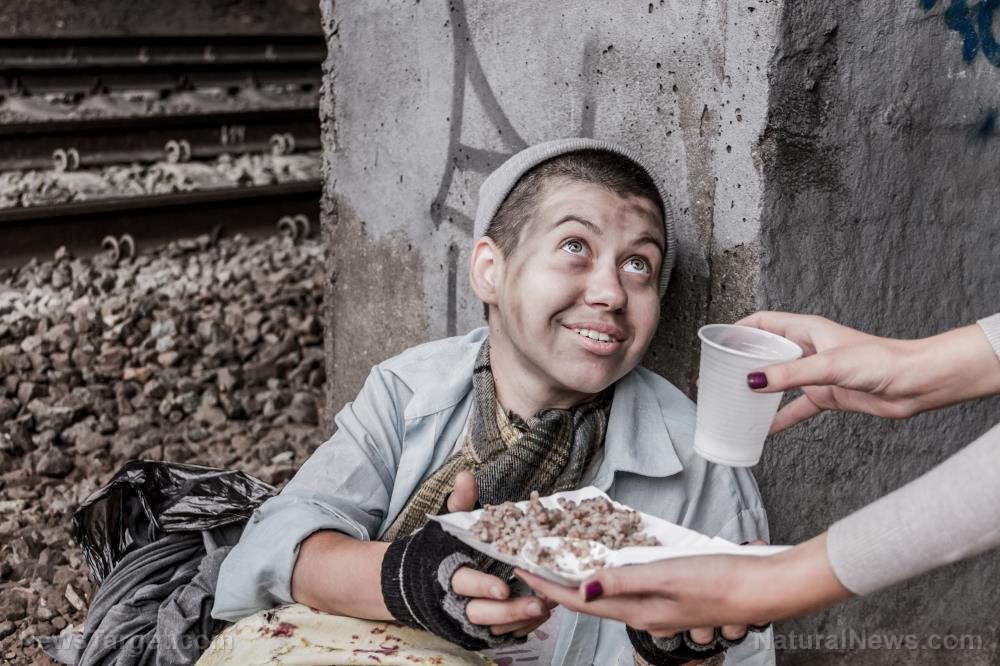Melissa Redpill talks about Hebrew High Days and the healing power of Shofar – Brighteon.TV
09/11/2021 / By Mary Villareal

On the latest Freedom Force Battalion episode, Melissa Redpill talked about Hebrew High Holy Days, starting with Rosh Hashanah, which is one of two new year celebrations in the Jewish faith, and the beginning of a year-long observance known as “Shmita.”
In her channel, Melissa also talked about the power of the Shofar as an instrument of healing.
Rosh Hashanah began on the evening of September 6. The two-day holiday commemorates the “beginning of the universe” and is observed with special worship services and the sounding of the shofar, an instrument that is made of ram’s horn, on the mornings of the holiday.
This holiday is considered to be the beginning of a cycle of fall holidays. It starts with the sunset on the night of the new moon, and continues with the day of fasting for Yom Kippur. The holidays will then culminate with Sukkot, which starts on the full moon of the harvest month of Tishrei.
Families celebrate Rosh Hashanah with several traditions, including lighting candles in the evening and eating sweet treats such as challah bread with raisins and apple slices dipped in honey.
Individuals also greet each other “I’shana tova,” which translates to “for a good year.”
There are others that observe Rosh Hashanah with a Tashlich ceremony at a body of water. This ceremony symbolically casts away one’s sins, and some people throw things like bread into the water as a representation of such casting away of sins.
The first day of Rosh Hashanah is the beginning of ten holy days — High holidays that are set as a time for repentance for Jews.
At this time, many congregate in synagogues to worship, particularly on Rosh Hashana and on the tenth day, which is the fast of Yom Kippur.
Yom Kippur is the day of atonement, and it involves 25-hour fast beginning sundown on Wednesday, September 15, until nightfall on Thursday, September 16.
The blowing of the shofar from the synagogue must be heard by congregants at the new year service as well as at the end of Yom Kippur.
Why these festivals are celebrated
The origins and reasons for the festivals are found in the bible and in religious cultures. As part of the Jewish tradition for millennia, the festival presents itself in ways that go beyond biblical texts.
Rosh Hashanah celebrates renewal. It also includes the blowing of the shofar horn, which is connected to the ram which was sacrificed instead of the son of Abraham, as he was commanded to do. Important activities such as attending the synagogue to hear the shofar, as well as eating apple slices with honey.
Yom Kippur, repentance and forgiveness are highlighted. Its origins were found in the Hebrew Bible, where it describes a day in a year in which premeditated and intentional sins were forgiven.
The biblical description of Yom Kippur involves a series of sacrifices and rituals that are designed to remove the sins from the people. Yom Kippur is the holiest and most somber day of the Jewish calendar. As a time for repentance, it focuses on fasting and prayers.
Religious calendars and festivals can encourage people to encounter certain ideas. It also provides avenues to reflect on the events of the past year and to find the courage to live differently when necessary.
In structuring the celebration of the new year, there is a profound recognition of the complexity of relationships and experiences in life.
High Holy Days mean to remember that time in itself is healing and restoration, and such, it helps mark the year in meaningful ways and highlights moral responsibility of individuals toward one another.
Melissa Redpill shares more information about Hebrew High Holy Days and other news on her show, Freedom Force Battalion, Wednesdays at 11 AM on Brighteon.TV.
Sources include:
Submit a correction >>
Tagged Under:
Festival of Trumpets, festivals, Hebrew High Holidays, Holidays, jewish, Jews, practices, religion, Rosh Hashanah, spirituality, traditions, Yom Kippur
This article may contain statements that reflect the opinion of the author
RECENT NEWS & ARTICLES
COPYRIGHT © 2017 PROPHECY NEWS



















